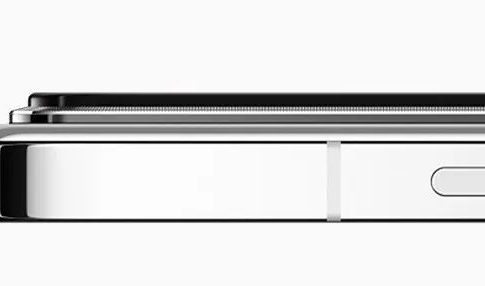Due to the intensifying market competition, a noticeable trend has emerged: the core product lines of major manufacturers are undergoing successive adjustments.
There are now more devices that focus on differentiation.
This is reflected in the market by the emergence of more and more appealing and excellent devices.
When choosing a primary device, I often find myself in a dilemma, and now with the annual selection, to be honest, it’s really hard to make a choice.
Ultimately, after a lot of intense discussions with my colleagues at Fengchao, we concluded that the best of 2024 should be these:
Best Operating Systems of the Year: HarmonyOS NEXT, ColorOS 15, and PANGOS 2
When it comes to the new systems from each company this year, what keywords come to mind first? For me, it’s “self-developed.”
Following last year’s return of Huawei Mate60 with the Kirin chip, the pure-blooded HarmonyOS, which had been “developing quietly” for years, finally made its official debut in the Huawei ecosystem this year.
The architecture has shifted to full-stack self-development, and the system’s renowned smoothness, multi-device collaboration, and privacy security have all evolved further.
The tripartite situation of global mobile operating systems has truly come to fruition this year.
2024 has indeed been an exceptionally challenging year for ColorOS.
The good news is that the reputation crisis that appeared on ColorOS 14 at the beginning of the year ultimately became the driving force for OPPO to fully develop ColorOS 15.
Smoothness has once again topped the Android camp, compatibility with Apple in interconnectivity has been achieved, and live photos have been made more interesting…
Especially in terms of smoothness. After a long-term experience by me, ColorOS 15 can indeed be called the “Dove” of the mobile phone circle.
PANGOS 2 is similar.
With the addition of HyperCore, the long-standing issues of smoothness and stability have finally been addressed with a completely new experience upgrade in this new system.
In addition, the personalization that once led the industry continues to iterate in PANGOS 2.
I guess the cinematic lock screen created with AI will soon be followed by other manufacturers.
Best Imaging Phones of the Year: vivo X200 Pro, Xiaomi 14 Ultra, and OPPO Find X8 Pro
Following the successful experience of last year’s X100 Pro, vivo has once again achieved a double success this year by launching a large-cup model with an upgraded imaging system before the true ultra-large cup model— the X200 Pro.
The new high-dynamic main camera LYT-818, designed for video, is paired with the industry’s largest HP9 200MP periscope telephoto lens.
When it comes to concert devices, the vivo X200 Pro is undoubtedly the best choice currently available.
The imaging system of Xiaomi 14 Ultra continues the path of its predecessor, the 13 Ultra.
The main camera, based on a one-inch sensor, has added a variable aperture design.
The dual telephoto lenses have been upgraded with new large apertures and support dual telephoto macro photography.
Combined with Leica optics, master portrait mode, street photography mode, and super capture, among other upgrades, no matter what subject you want to shoot with it, it undoubtedly offers one of the best experiences in the industry.
In comparison, the reason why OPPO Find X8 Pro is here mainly stems from its innovative design and structure.
With the new design of the periscope telephoto module, the OPPO Find X8 Pro has unprecedentedly integrated dual periscope telephoto lenses into a device that can be called “compact.”
If you value photography but are often discouraged by the bulky camera modules of some products, the Find X8 Pro will be one of the best choices.
Best Value-for-Money Phones of the Year: REDMI K80, realme GT7 Pro, and iQOO Neo10 Pro
When it comes to the best value-for-money phones of the year, this is probably the easiest category for me to choose from.
The first one that comes to mind is Xiaomi’s REDMI K80.
As the first mid-range phone launched at the end of the year, it starts at just $2,499 and comes with a series of top-tier specifications, including the Snapdragon 8 Gen 3, a 2K Huaxing M9 straight screen, ultrasonic fingerprint recognition, a 6,550mAh battery with 90W fast charging, and IP68 dust and water resistance.
In any case, any mid-range phone released after it will inevitably have to use it as a benchmark.
The realme GT7 Pro has seen a slight price increase compared to its predecessor this year.
But in terms of value for money, it is still an indispensable force among this generation of flagship phones.
Its performance and battery life are considered top-tier, with the Snapdragon 8 Ultra and a 6,500mAh battery with 120W fast charging.
What’s more, unlike many new flagships that have chosen to downsize their cameras, it still retains a periscope telephoto lens.
As for the iQOO Neo10 Pro, my reason for choosing it is very simple.
With the flagship platform undergoing a significant performance upgrade and prices rising across the board, iQOO has once again taken action.
Just over a month after its initial release, the price of the MediaTek Dimensity 9400 has been reduced to $3,199.
Undoubtedly, this is one of the lowest thresholds for experiencing top-tier performance today.
Best Foldable Phones of the Year: Huawei Mate XT, vivo X Fold3 Pro, and Honor Magic V3
2024 has also been a pivotal year for the foldable phone market.
The triple-fold form factor, which previously existed only in concept phones, has finally been mass-produced in the form of the Huawei Mate XT.
In terms of hardware design and system software adaptation, there is no doubt that the Huawei Mate XT is the most innovative product among this year’s foldable phones.
Returning to the conventional dual-fold category, the main theme of this year’s mobile phone circle is still “lightweight.”
The core of the vivo X Fold3 Pro is to achieve a “multi-functional” image while being as thin and light as possible.
Weighing only 236 grams, it integrates a camera system comparable to that of a straight-board imaging flagship, which is truly remarkable.
The Honor Magic V3, on the other hand, has taken the opposite approach—achieving the most extreme lightweight experience while still packing a fully functional package.
The lightest and thinnest version, the velvet black, has a thickness of only 9.2 mm and weighs 226 grams.
In daily use, it is even more convenient than some straight-board phones.
Best Smart Cars of the Year: Xiaomi SU7, XPeng P7+, and Li Auto L6
As Xiaomi’s first car, the Xiaomi SU7 has chosen the most difficult path at the outset—pure electric, sedan, and mechanical quality.
People always love stories of comebacks, and the Xiaomi SU7, which was not initially favored by the mainstream voice, has proven itself to be a “phenomenal” product in this year’s automotive circle through its sales figures after its launch.
If the Xiaomi SU7 is the most popular new energy sedan of the year, then in the SUV segment, it is undoubtedly the Li Auto L6 that takes the lead.
With ample space, a comfortable cabin experience, and top-tier intelligence, the Li Auto L6 has become the biggest hit of Li Auto this year and has set a new benchmark for all extended-range SUVs.
The last car of the year that I ultimately chose is the XPeng P7+.
As another recently popular new electric sedan, the success of the XPeng P7+ is not accidental.
With its sleek and agile fastback coupe design, SUV-level interior space, top-tier intelligent driving, and extremely competitive pricing, the sales of the XPeng P7+ have taken off, and XPeng has thus fully recovered.





No comments